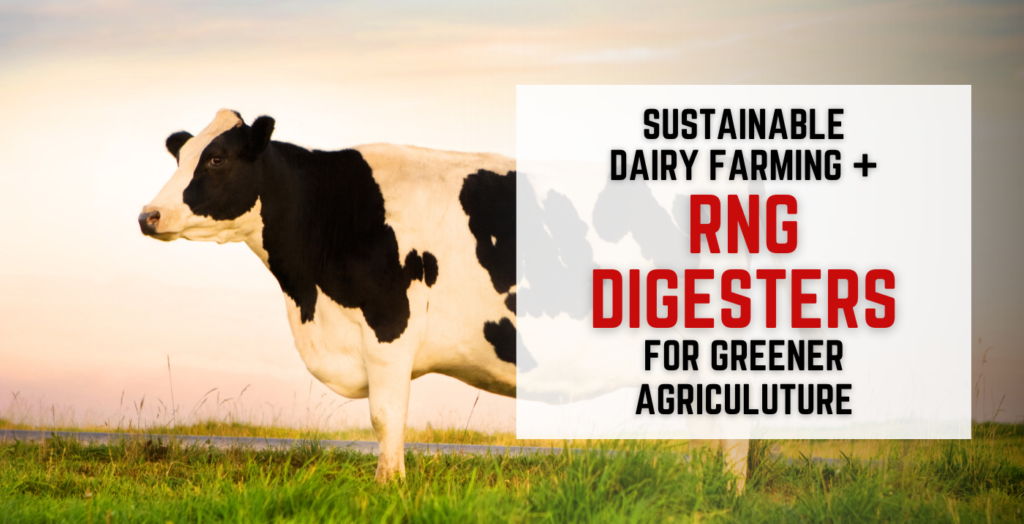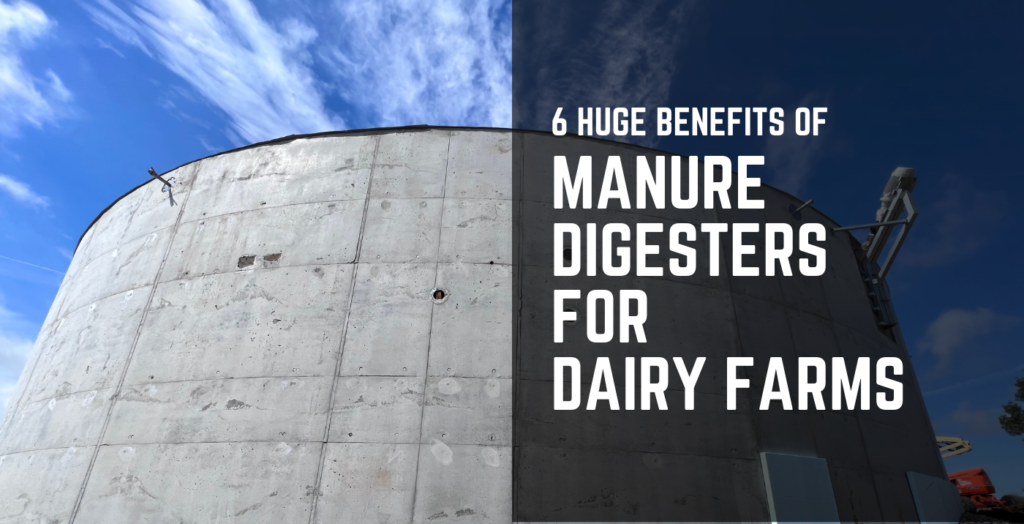The conventional economic framework carries some environmental issues that won’t be changed without some big changes in how businesses operate. Today, nearly every industry is looking for ways to make those changes. But the cost behind some of these changes could prohibit many companies from adopting them.
Enter the circular economy framework. And with circularity centers becoming a more common part of dairy farms, even agriculture is making adjustments to old systems to be more environmentally friendly.
But when dairy farms add circular technology to their operations, they also become more profitable. Here’s how dairy circularity centers throughout the nation are making both farms and the economy in general.
What Is A Circularity Center?
Both organic and plastic waste can be reused and recycled with the proper technology. Circularity centers are one of these technologies. A circularity center facilitates anaerobic digestion to break down organic and inorganic waste into usable materials and resources.
Pioneered by companies like Brightmark, circularity centers change end-of-life-cycle materials into fuel, raw materials, and organic fertilizers. In doing so, waste is transformed into new resources. The regenerative design of this new framework is the key to the circular economy model.
The Circular Economy Model
The “cradle to grave” linear economy has been the dominant economic framework since the Industrial Revolution: raw materials are made into parts, then into products, and finally disposed of once their usability runs out. In some cases, planned obsolescence drives this linear pattern even faster than traditional functional life cycles.
In the circular economy model, the end of functionality does not equal the end of usability. Instead, products are reused, recycled, or refurbished so that less waste ends up in landfills. Additionally, organic waste (food waste, manure, livestock waste) can be repurposed through anaerobic digestion, reducing greenhouse gas emissions and carbon footprints connected to agriculture.

How Do We Make Farming More Sustainable?
RNG Digesters are the answer to environmental concerns.
The Birth of Circularity
The Ellen MacArthur Foundation, started by solo sailor Ellen MacArthur in 2010, is the leading voice in circularity and circular economic frameworks. Ellen’s time circumnavigating the globe with everything she needed in her small sailing vessel led her to see the complexity of global ecosystems. And that led her to thinking about the linear nature of the global economy in a new way.
The work of the foundation spans the globe, aiming to reimagine the way we treat products, waste, and the environment at a higher level.
Principles of the Circular Economy
There are three key principles that set the foundation for a circular economy. Two of these principles govern how companies and individuals approach waste and pollution. The third principle guides us to better stewardship of the world around us.
- Eliminate Waste and Pollution: starting with better design principles, we can reduce built-in waste by choosing materials that can be recycled. Food packaging, for example, often cannot be recycled. Changing these types of materials to recyclable ones improves the environment by seeing the bigger picture of product lifecycles with waste reduction as a central goal.
- Circulate Products and Materials: by recycling, reusing, refurbishing, and remanufacturing as much as possible, companies and individuals can reduce waste materials and pollution. Keeping waste products out of landfills also means keeping new raw materials intact.
- Regenerate Nature: Instead of relying on extraction for raw materials, circularity looks to regenerative approaches for sourcing. Circular farming is designed to provide a no-waste solution to food supply, livestock care, and soil health issues.
Applications for Circularity
Circularity should extend through all industries, markets, and consumer levels, but today the primary applications fall into a few major categories: agriculture, recycling, and tech.
Circularity in the Tech Industry
Tech companies, and data centers in particular, can implement circularity to reduce their carbon footprints. The equipment used in the IT industry can quickly end up in landfills, but through repairing, upcycling, and regenerating obsolete or broken equipment, tech companies can minimize their waste, improve the efficiency of computers and servers, and extend the usability of their equipment.
Circularity for Better Recycling
For recycling centers, new technologies are making plastic recycling simpler than ever. Improvements like single-stream recycling and anaerobic pyrolysis minimize carbon emissions and waste materials.
Agricultural Circularity
In agriculture, anaerobic digesters can transform cattle slurry into biogas and organic fertilizer. The renewable natural gas (RNG) can replace geologically sourced natural gas, and organic fertilizer can replace chemical fertilizers and improve soil health.
And these benefits make circularity centers especially appealing for dairy farms.

The Future of Green Farming is Here.
See how manure digesters for dairy farms are leading the way to eco-friendly fuel and revenue.
Dairy Farms and Circularity Centers
South Dakota’s dairy farms are implementing circularity principles in their operations with incredible outcomes. And while there are only a few circularity centers currently operating in the state, it’s clear that this approach to farming will be picking up speed in the coming years.
Waste Management
Managing cattle slurry can be dangerous. Conventional slurry pits emit toxic chemicals and greenhouse gases, making them both a health hazard and an environmental hazard. And while these slurry pits can produce organic fertilizer, the process is long and runs the risk of soil contamination.
RNG digesters allow farms to store and process their cattle slurry more efficiently, more safely, and more quickly. Dairy farmers have fewer health hazards to worry about, and the waste their livestock produces is stored in airtight concrete digesters instead of open pits or plastic-covered reservoirs.
Reduced Emissions
Livestock-related methane emissions account for approximately 3.7 percent of all greenhouse gas emissions. That amounts to approximately 500 liters of methane per day per cow. By capturing that methane in manure digesters and processing it into RNG, farmers can reduce their environmental impact quickly while also creating circular products that improve the economy with less environmental impact.
Carbon-Negative Fuel
RNG not only replaces geologically sourced natural gas but also reduces greenhouse gas emissions before it’s added to the pipeline. Capturing methane before production turns this renewable resource into a carbon-negative alternative to fossil fuels.
Additional Revenue
Farmers that include a circularity center in their operations aren’t just making the environment healthier. They’re also adding new streams of income through land leasing, biogas production, and organic fertilizer sales.
Partnering with Brooks for Your Circularity Center
South Dakota’s dairy farmers have experts in their communities ready to transform their farms into circularity centers that improve the environment and the economy. Brooks Construction has partnered with several dairies already, and our professional approach to these large-scale projects will help your farm become part of the circular economy with some of the most reputable RNG development partners in the country.
Contact us today to see what a digester system can do for your farm.



